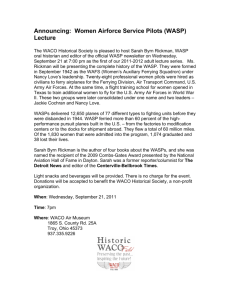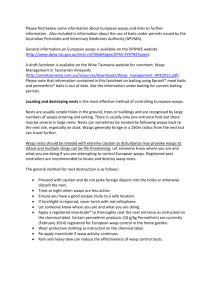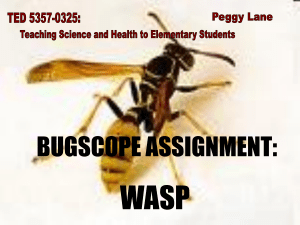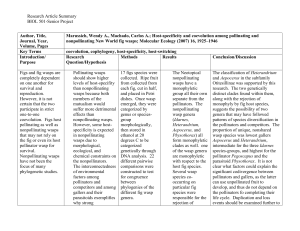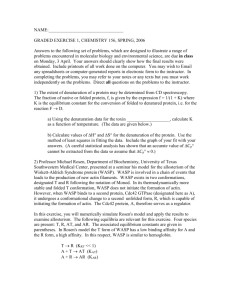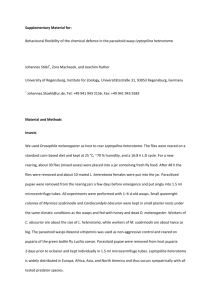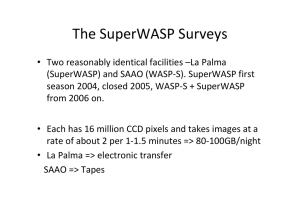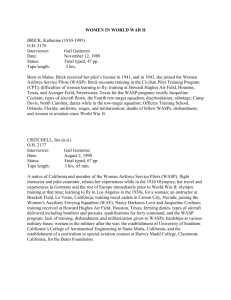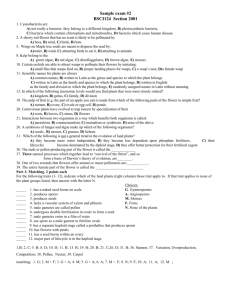Dolichovespula media - The Median Wasp
advertisement
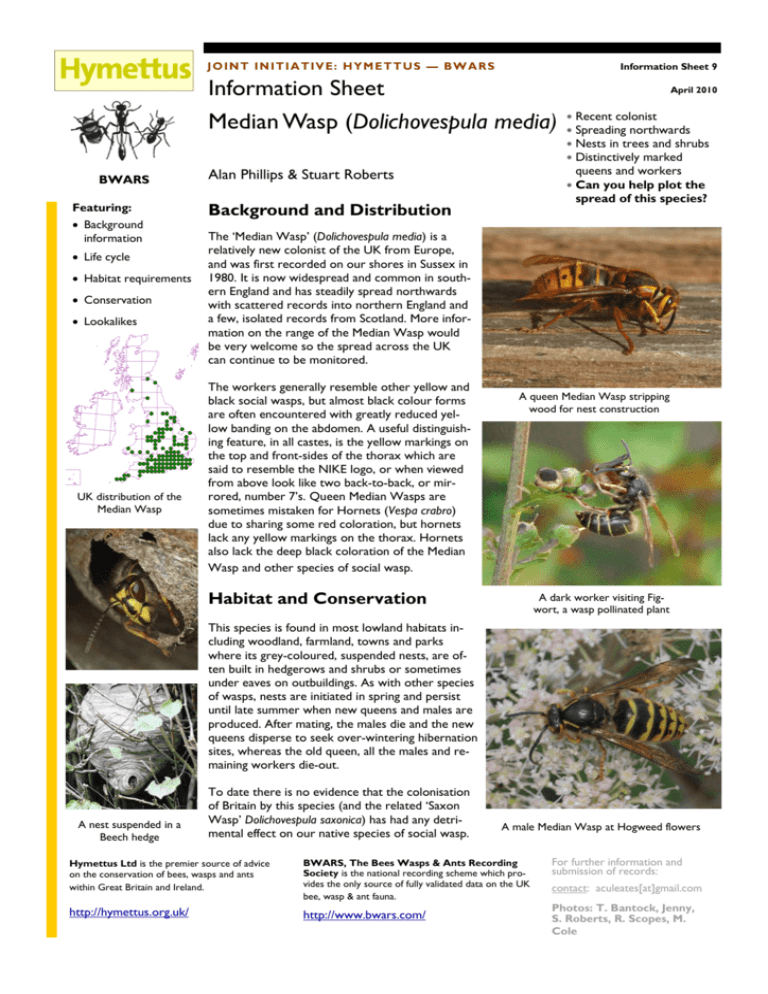
JOINT INITIATIVE: HYMETTUS — BWARS Information Sheet 9 Information Sheet Median Wasp (Dolichovespula media) BWARS Featuring: • Background information • Life cycle • Habitat requirements • Conservation • Lookalikes UK distribution of the Median Wasp April 2010 ∗ Recent colonist ∗ Spreading northwards ∗ Nests in trees and shrubs ∗ Distinctively marked queens and workers Alan Phillips & Stuart Roberts ∗ Can you help plot the spread of this species? Background and Distribution The ‘Median Wasp’ (Dolichovespula media) is a relatively new colonist of the UK from Europe, and was first recorded on our shores in Sussex in 1980. It is now widespread and common in southern England and has steadily spread northwards with scattered records into northern England and a few, isolated records from Scotland. More information on the range of the Median Wasp would be very welcome so the spread across the UK can continue to be monitored. The workers generally resemble other yellow and black social wasps, but almost black colour forms are often encountered with greatly reduced yellow banding on the abdomen. A useful distinguishing feature, in all castes, is the yellow markings on the top and front-sides of the thorax which are said to resemble the NIKE logo, or when viewed from above look like two back-to-back, or mirrored, number 7’s. Queen Median Wasps are sometimes mistaken for Hornets (Vespa crabro) due to sharing some red coloration, but hornets lack any yellow markings on the thorax. Hornets also lack the deep black coloration of the Median Wasp and other species of social wasp. A queen Median Wasp stripping wood for nest construction Habitat and Conservation A dark worker visiting Figwort, a wasp pollinated plant This species is found in most lowland habitats including woodland, farmland, towns and parks where its grey-coloured, suspended nests, are often built in hedgerows and shrubs or sometimes under eaves on outbuildings. As with other species of wasps, nests are initiated in spring and persist until late summer when new queens and males are produced. After mating, the males die and the new queens disperse to seek over-wintering hibernation sites, whereas the old queen, all the males and remaining workers die-out. A nest suspended in a Beech hedge To date there is no evidence that the colonisation of Britain by this species (and the related ‘Saxon Wasp’ Dolichovespula saxonica) has had any detrimental effect on our native species of social wasp. A male Median Wasp at Hogweed flowers Hymettus Ltd is the premier source of advice on the conservation of bees, wasps and ants within Great Britain and Ireland. BWARS, The Bees Wasps & Ants Recording Society is the national recording scheme which provides the only source of fully validated data on the UK bee, wasp & ant fauna. http://hymettus.org.uk/ http://www.bwars.com/ For further information and submission of records: contact: aculeates[at]gmail.com Photos: T. Bantock, Jenny, S. Roberts, R. Scopes, M. Cole

